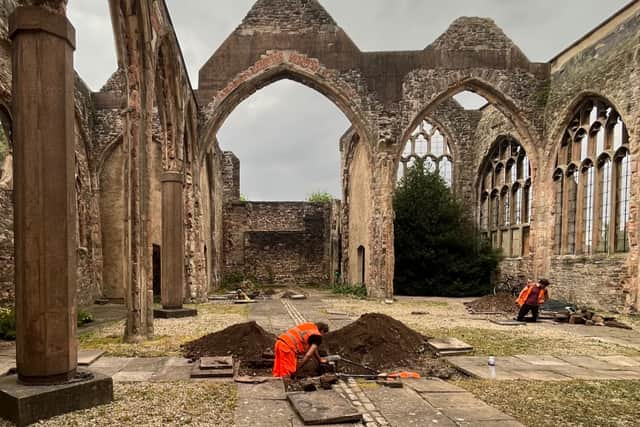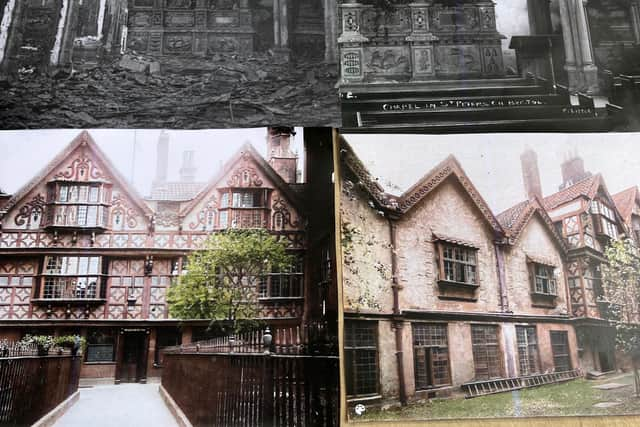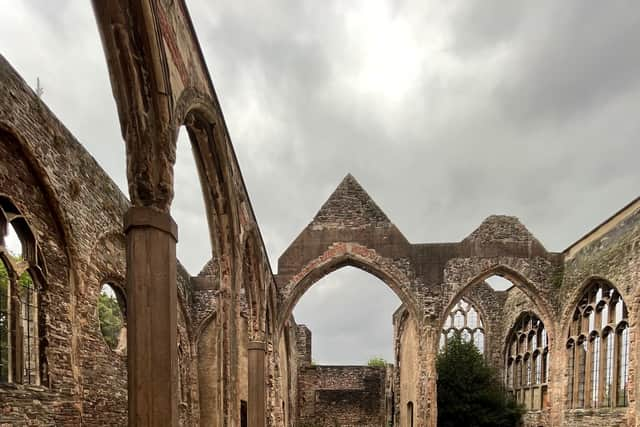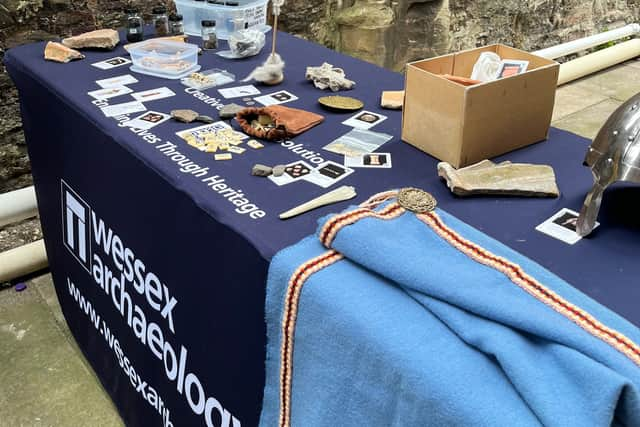Why archaeologists are digging beneath a ruined city centre church - and what do they hope to find
and live on Freeview channel 276
As part of the Festival of Archaeology this week, Wessex Archaeology are opening their test pit excavations at St Peter’s Church in Castle Park to the public from today (20 July) to Friday (22 July).
The event is offering the public the chance to understand more about the history of the (likely) oldest church in Bristol and to witness the excavations as they happen.
Advertisement
Hide AdAdvertisement
Hide AdAs part of its on-going repair and restoration works to this iconic building, Bristol City Council has commissioned work to better understand what is beneath the floor of the church in order to repair it.
The team is carrying out an archaeological investigation of the church floor, in order to understand why it is subsiding and how they could make it safer so that the building could be reopened to the public and, in the future, used for events.
It’s also an opportunity to understand more about what lies beneath the medieval building and potentially discover artefacts and knowledge to pass onto future generations.


Over the course of the next few days, from 10-3 pm, the public has the chance to head down and see what is happening, as well as talk through what has been discovered during the test pit phase.
Advertisement
Hide AdAdvertisement
Hide AdIt also offers a chance to understand the rich history of the church, too, and its position in Bristol’s history.
The earliest references to the church date back to AD 1106, and the rest of the church was likely to be built between 1380 and 1415.
Counsillor Ellie King, cabinet member for public health and communities, told BristolWorld: “The church has a really rich history and we think that, underneath the foundations that are here, there is an Anglo Saxon place of worship.
“The site was part of a very commercial built-up area at one point before it was a part of the Bristol Blitz in the war.”
Advertisement
Hide AdAdvertisement
Hide AdThe Blitz resulted in the roof coming off and the church becoming structurally unsound. During the 1970s, St Peter’s was patched up and used as a memorial to victims of the Bristol Blitz.


So, what can people expect when they head down to the site over the next couple of days? Cai Mason, senior project officer for Wessex Archaeology, said: “Over the next three days, we are digging four relatively small test trenches of three metre’s long and just under a metre wide.
“The main aim is to find out whether there is still a church floor there and what is causing it to subside. That’s the main aim, but we are also hoping to see if we can find some other bits of archaeological information.
“We did some ground penetration radar surveys and that showed some interesting anomalies that could be an earlier church underneath it. Whether we can get deep enough to see any of that is another matter!”


Advertisement
Hide AdAdvertisement
Hide AdWhat is Mr Mason expecting to find? “We are expecting there to be brick-lined burial vaults and graves, but whether these were cleared after the war, we don’t know,” he said.
“We are not intending to dig any remains up but we are hoping to see how many graves there are. The information we get we can then pass onto structural engineers.”
Mr Mason also talks through what artefacts they may accidentally come across while doing their excavations and investigations. “We may well come across some medieval floor tiles, and I know that when they dug a service trench in here in the sixties, they bagged up a load,” he says.
“We might also find he odd few pits of pottery and furniture of medieval and post-medieval dates.”


Advertisement
Hide AdAdvertisement
Hide AdWhat’s exciting is that this is the first time excavations have taken place. “This is the first time we’ve done an archaeological investigation inside,” said Mr Mason.
“There have been quite a few around it, but not inside. It’s always great to be the first person to have a look!”
What is the hope for the future of the building? “It’s to preserve the history and it’s essential that we value these monuments so that people know our Bristol history,” said Councillor King.
“We hope to bring people in to be able to use the space and understand the history. We are looking to do it with other sites such as one in Stoke Park as well.”
Advertisement
Hide AdAdvertisement
Hide AdWhy do the council feel this is an important event? “It’s important to engage with the church and to learn more about it, it’s too valuable to just be left to decline,” said Councillor King.
“We want to preserve our monuments and for people to understand them properly in all their complexity and beauty.”
And what’s the most exciting element of all of this for the team carrying out the works? “You never know what you are going to find!” smiles Mr Mason.
Comment Guidelines
National World encourages reader discussion on our stories. User feedback, insights and back-and-forth exchanges add a rich layer of context to reporting. Please review our Community Guidelines before commenting.
